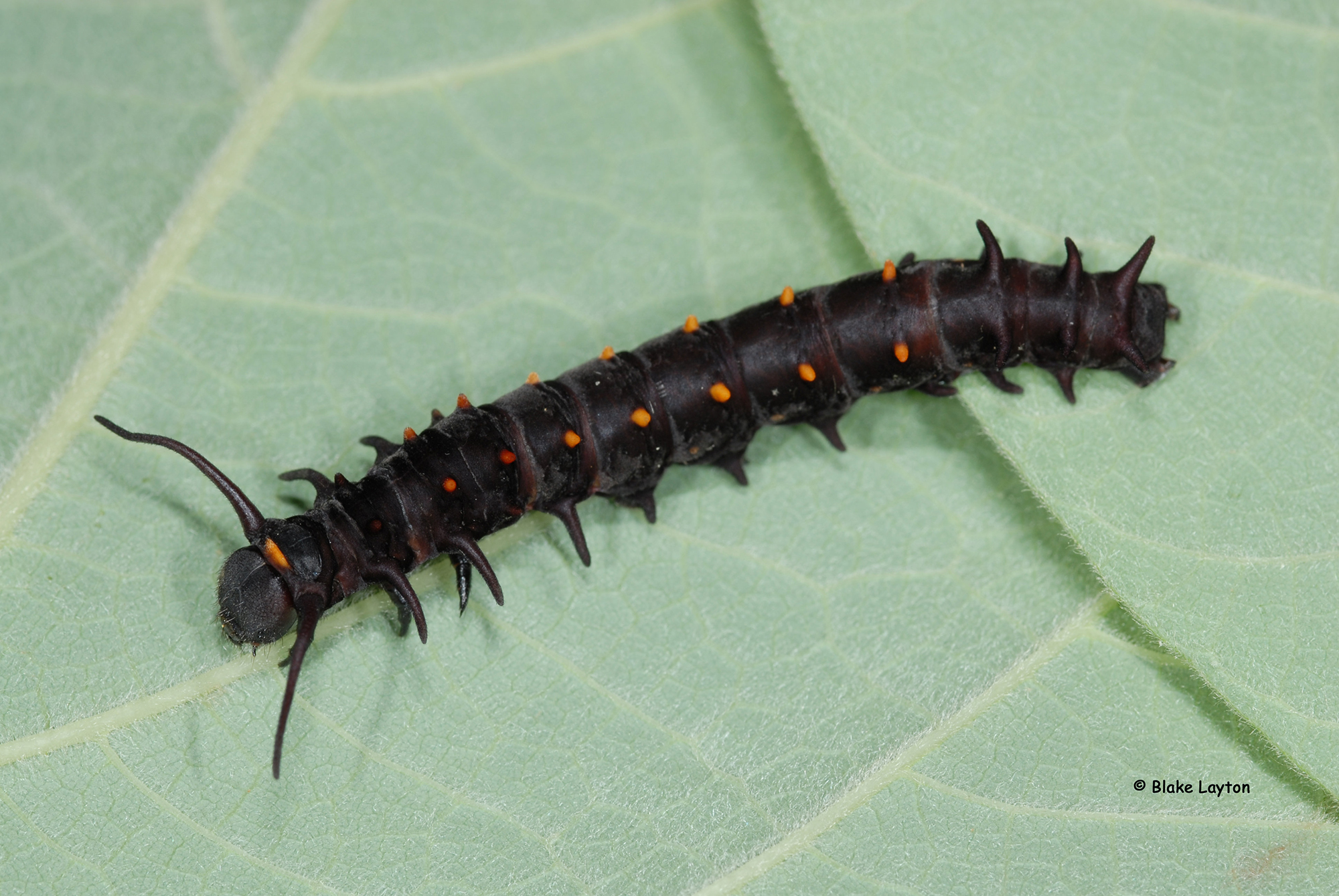Pipevine Swallowtail Caterpillar | Vol. 3, No. 17
Related News
July 25, 1997
June 23, 1997
May 12, 1997
March 17, 1997

Order: Lepidoptera
Family: Papillionidae
Pipevine swallowtail caterpillars look like some sort of fantasy character for the next Alice in Wonderland movie—purple with orange spots and long filamentous body protrusions. They are also distasteful and toxic to birds and other animals, and they retain this trait when they become butterflies. The toxins come from their host plant, dutchmans pipe, Aristolochia spp., which are striking and unusual plants in their own right, having large heart-shaped leaves and pipe-shaped blooms.
Pipevine swallowtail butterflies are black with iridescent-blue hind wings and bright orange spots on the undersides of the hind wings. They also have the tail-like projections on the hind wings that are characteristic of swallowtail butterflies, and there are several other butterfly species that mimic them and take advantage of the vicarious protection afforded by their toxicity. Birds that have attempted to eat a pipevine swallowtail are reluctant to try another one. Black swallowtails, spicebush swallowtails, and redspotted purple butterflies look so similar to pipevine swallowtails that most birds can’t tell the difference. This whole system: a caterpillar that feeds on a toxic plant, sequesters the toxic compounds in its body, retains the toxins as an adult, and has other butterflies that gain protection from predators by mimicking it, is remarkably similar to that of monarch butterflies.
Blake Layton, Extension Entomology Specialist, Mississippi State University Extension Service.
The information given here is for educational purposes only. Always read and follow current label directions. Specific commercial products are mentioned as examples only and reference to specific products or trade names is made with the understanding that no discrimination is intended to other products that may also be suitable and appropriately labeled.
Sign up to receive Bug's Eye View.